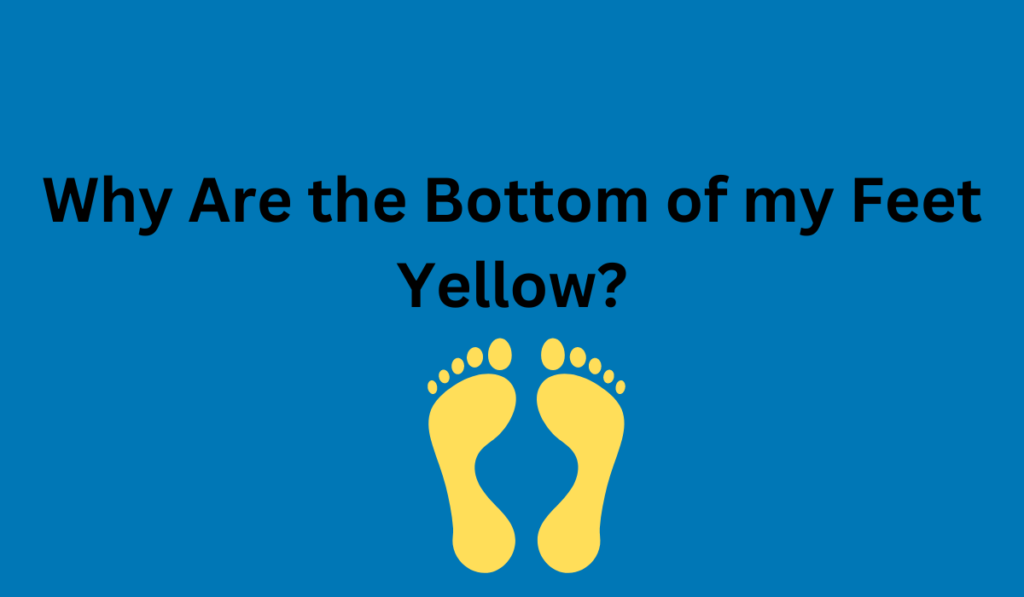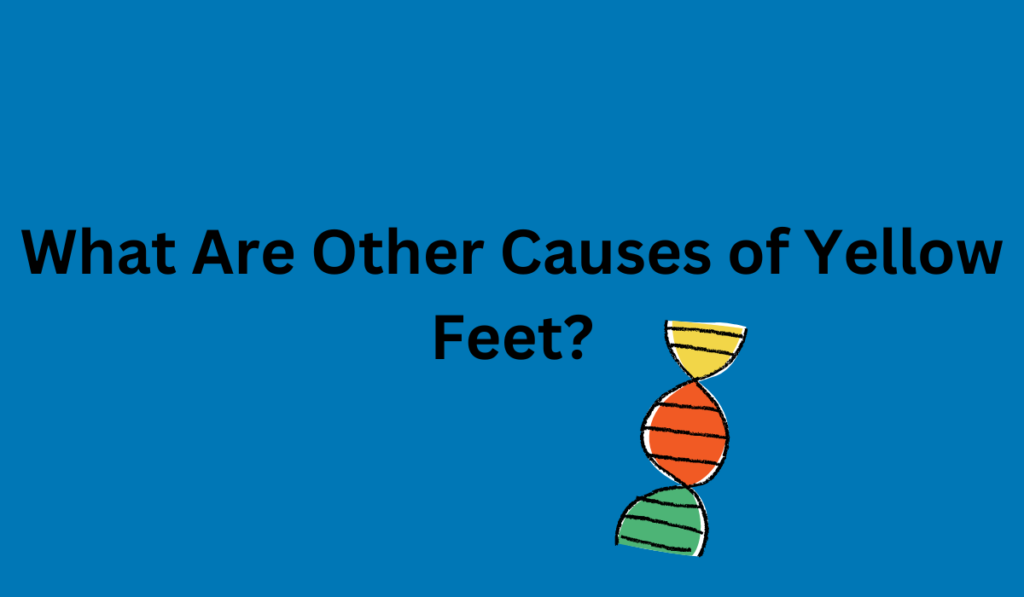
Have you ever been curious about why a person’s feet can turn yellow? There are various reasons for this occurrence, but most of them are not a cause for alarm.
Jaundice, anemia, and calluses are some possible reasons for yellow feet that can be treated with ease. People with yellow feet may also experience thick, waxy, or dry skin around their feet and legs.
In this condition, the toes or soles of the feet appear yellow while other parts of the feet appear normal. Depending on the underlying cause, there may be additional symptoms present.
Fatigue, itching, and sensitivity to cold temperatures are examples of these symptoms. The treatment for yellow feet will depend on the cause of the symptom. This article will cover some of the most common causes of yellow feet, as well as treatment options and preventative techniques.
Can it be Jaundice?

Jaundice can be one of the causes of yellow feet. Jaundice is a medical condition that causes a buildup of bilirubin in the bloodstream, which can lead to yellowing of the skin and eyes. In some cases, the yellowing can also affect the feet. Jaundice can be caused by a range of underlying health conditions, such as :
- Liver disease
- Hepatitis
- Gallstones
If you suspect that your yellow feet may be caused by jaundice, it’s important to see a doctor for a proper diagnosis and treatment.
What Are Other Causes of Yellow Feet?

- Calluses
Calluses are a thick, hardened layer of skin that forms because of constant friction or pressure. They usually develop on the palms, fingertips, or the bottom of the feet, and can sometimes cause the skin to turn yellow.
When the calluses on the bottom of feet become too thick, they can be painful and make it difficult to walk. If calluses are the cause of yellowing on the bottom of feet, treatment options include using pumice stones or foot files to gently remove the hardened skin, wearing comfortable and well-fitting shoes, and using foot creams to keep the skin soft and moisturized.
In more severe cases, a podiatrist can perform a procedure to remove the callus.
Preventing calluses and other foot conditions can be achieved through proper foot care, including wearing comfortable shoes with good arch support, keeping the feet clean and moisturized, and avoiding activities that cause excessive friction or pressure on the feet.
By taking care of your feet, you can reduce the likelihood of developing calluses and other conditions that may cause the skin on the bottom of your feet to turn yellow.
- Anemia
Anemia can be a cause of yellow feet. Anemia is a condition where the body lacks enough red blood cells or hemoglobin. When this occurs, there is a reduced amount of oxygen that can reach the body’s tissues, including the feet.
As a result, the skin on the bottom of the feet may turn yellow due to a lack of oxygen. Anemia can be caused by various factors, including nutrient deficiencies, chronic illnesses, and genetic disorders.
Treatment of anemia involves addressing the underlying cause and may include dietary changes, supplements, and medication.
- Raynaud’s Disease
Raynaud’s disease is a condition that affects the blood vessels in the body, causing them to narrow and reduce blood flow to certain areas. This can result in symptoms such as coldness, numbness, and pain in the affected areas, usually the fingers and toes.
In some cases, Raynaud’s disease can cause the bottom of the feet to turn yellow. This occurs when blood flow is restricted to the feet, causing a lack of oxygen and nutrients to the tissues, leading to a yellowish discoloration.
Raynaud’s disease can be triggered by various factors, such as cold temperatures, stress, and certain medications. Treatment options for Raynaud’s disease include avoiding triggers, keeping the feet warm, and taking medication to improve blood flow.
It’s important to consult with a healthcare professional if you experience yellowing of the bottom of your feet, as it could be a sign of an underlying condition such as Raynaud’s disease. Early diagnosis and treatment can help manage the symptoms and prevent further complications.
- High Intake of Turmeric
Turmeric is a commonly used mild spice in households that is believed to have medicinal properties due to its antioxidant and anti-inflammatory properties.
Curcumin, a bright yellow pigment, is the most active compound found in turmeric. According to the authors of a study, applying turmeric to the skin can also cause discoloration and turn the skin yellow.
- Carotenemia
Carotenemia is caused by a high concentration of carotenoids in the blood, which are pigments found in fruits and vegetables. When a person consumes a good amount of fruits and vegetables rich in carotenoids, they are excreted in the urine, sweat, and stool.
How Can You Prevent Yellow Feet?
- To maintain healthy feet, it’s important to practice good foot hygiene. Wash your feet with soap every night and apply moisturizer before bedtime to prevent dryness.
- Keep your toenails clean, dry, and trimmed, but avoid curving the edges too much with a nail file to prevent ingrown toenails.
- Choose well-fitting shoes that provide good support and avoid tight shoes, socks, and high heels. Also, avoid walking barefoot outside to reduce the risk of bacterial infection.
- Follow a balanced diet that includes foods rich in iron, calcium, and Vitamin B12. Limit your intake of beta-carotene-rich fruits and vegetables and opt for high-fiber, low-cholesterol foods.
- Inspect your feet daily for injuries or changes in the skin such as cuts, burns, redness, swelling, corns, calluses, discoloration, cracks, dryness, or brittleness.
- If you have diabetes, check your blood sugar level daily and see a doctor regularly if you have any associated systemic conditions to prevent complications.
When to See a Doctor?
If you notice yellow skin around your feet, it’s important to take it seriously as it could be a sign of a more significant medical issue. If the discoloration appears on multiple areas of the body, it can be particularly challenging to manage.
In addition, individuals with yellow skin should seek medical attention if they experience any of the following symptoms:
- Fever
- Headaches
- Fatigue
- Chest pain
Once a diagnosis is made through testing, it’s important to follow the prescribed treatment plan until the issue is resolved. A podiatrist can assist with calluses and other foot-related problems, while a dietician can assist with meal planning to address underlying health concerns.
Final Thoughts
I hope you have gained a comprehensive understanding of the issue of yellow feet and its primary causes.
The causes of yellow feet can have a significant impact on your health. Once you identify and address the underlying condition, your feet will gradually return to their natural color and recover over time.
However, yellow feet can also indicate a more severe underlying problem, so it is crucial to seek medical attention promptly if you have any concerns or experience additional symptoms related to this issue.